I have followed the instructions in this StMoMo package document to fit Lee Carter to mortality data for Canada.
The next step in my project is to measure the forecast accuracy of the Lee Carter model when fit to this Canadian data.
To do this, I tried to use accuracy() but ran into an error since my Lee Carter fit is of class "fitStMoMo" and not of class "forecast" or a time series.
Is there an alternative forecast accuracy function that I can use on "fitStMoMo" objects that will calculate Mean Error, Root Mean Squared Error, Mean Absolute Error, Mean Percentage Error, Mean Absolute Percentage Error and Mean Absolute Scaled Error for me?
Reprex
Reprex created using EWMaleData as used in the StMoMo document to flag the error specifically:
library("StMoMo")
library("demography")
library("forecast")
constLC <- function(ax, bx, kt, b0x, gc, wxt, ages){
c1 <- mean(kt[1, ], na.rm = TRUE)
c2 <- sum(bx[, 1], na.rm = TRUE)
list(ax = ax + c1 * bx, bx = bx / c2, kt = c2 * (kt - c1))
}
LC <- StMoMo(link = "logit", staticAgeFun = TRUE, periodAgeFun = "NP",
constFun = constLC)
LC <- lc(link = "logit")
LC$gnmFormula
#> [1] "D/E ~ -1 + offset(o) + factor(x) + Mult(factor(x), factor(t), inst = 1)"
EWMaleData
#> Mortality data for England and Wales
#> Series: male
#> Years: 1961 - 2011
#> Ages: 0 - 100
#> Exposure: central
EWMaleIniData <- central2initial(EWMaleData)
ages.fit <- 55:89
wxt <- genWeightMat(ages = ages.fit, years = EWMaleIniData$years,
clip = 3)
LCfit <- fit(LC, data = EWMaleIniData, ages.fit = ages.fit, wxt = wxt)
#> StMoMo: The following cohorts have been zero weigthed:
#> 1872 1873 1874 1954 1955 1956
#> StMoMo: Start fitting with gnm
#> Initialising
#> Running start-up iterations..
#> Running main iterations.....
#> Done
#> StMoMo: Finish fitting with gnm
LCfor <- forecast(LCfit, h = 50)
class(LCfit)
#> [1] "fitStMoMo"
class(LCfor)
#> [1] "forStMoMo"
accuracy(LCfit)
#> Error in accuracy.default(LCfit): First argument should be a forecast object
#> or a time series.
accuracy(LCfor)
#> Error in accuracy.default(LCfor): First argument should be a forecast object
#> or a time series.
